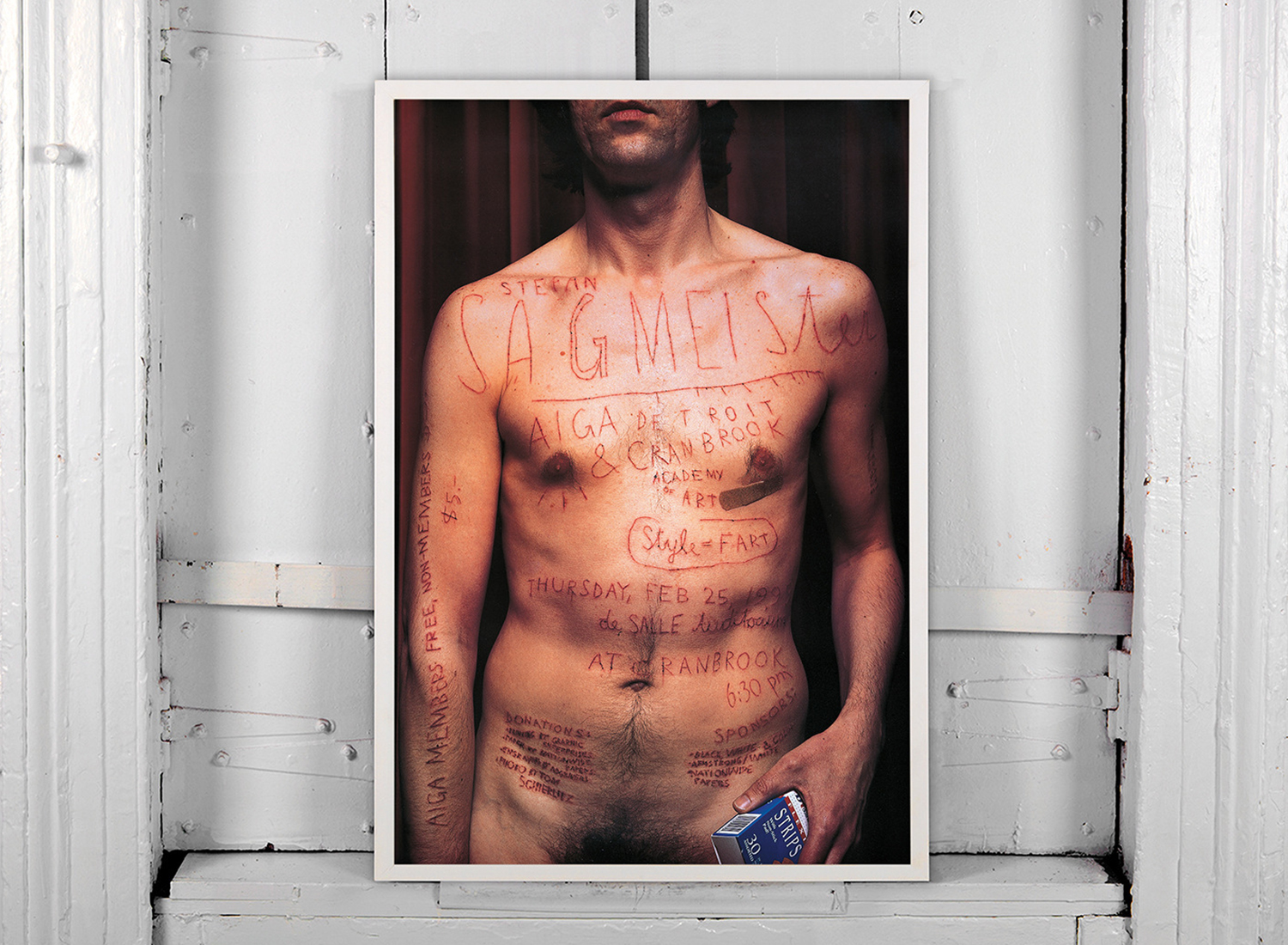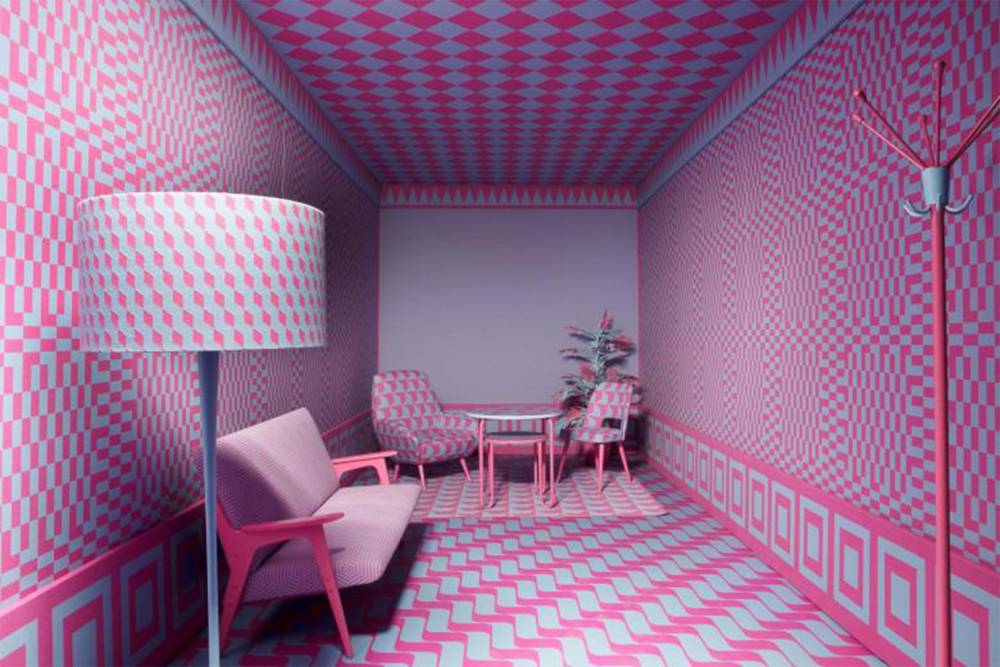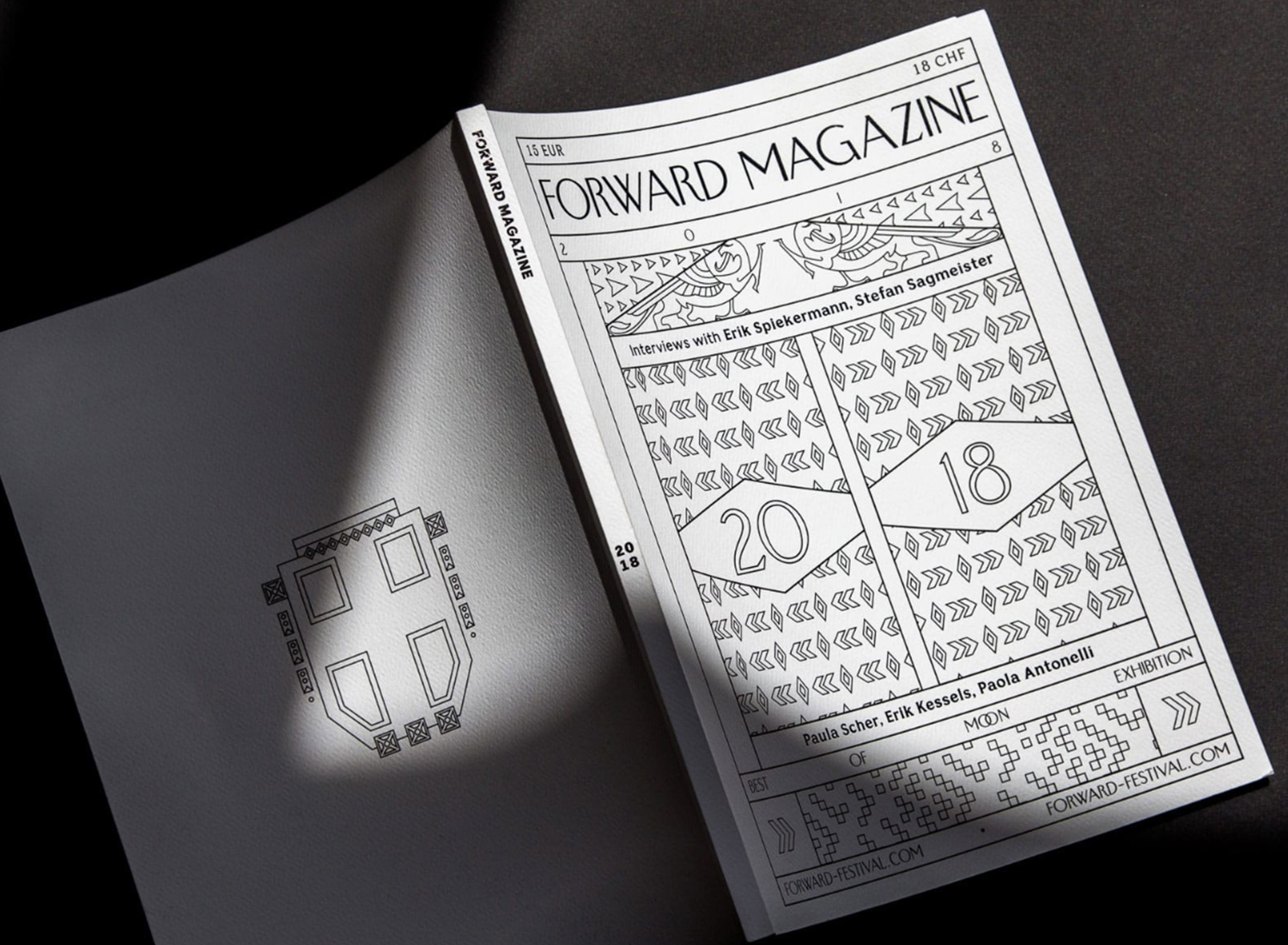Stefan Sagmeister wants you to stop concentrating on your own happiness
The world-famous designer and artist has collected virtually every design award. As a product and graphic designer, Bregenz-born Stefan Sagmeister has worked his way up to the very top by mashing up typography and picture language in a fresh, unique and sometimes even provoking manner.
Interview by Catherine Hazotte
Since 2012, Stefan Sagmeister and Jessica Walsh are running their New York-based agency Sagmeister & Walsh. Besides working for interesting clients all around the globe, he designed album covers for numerous bands like The Rolling Stones, Lou Reed, and Aerosmith. He won the Grammy award twice, wrote several books and curated art shows from Zurich to Philadelphia. Stefan talks in this interview about the learnings of his last sabbatical, the importance of atmosphere in a room and also a piece of good advice for you.

How did you get where you are now?
I started to write for a small magazine called Alphorn when I was 15 years old and quickly discovered that I loved doing the layout more than the writing.
How did you develop your own design style?
I am not sure if we have a readily identifiable design style. We do have some methods. Somebody smarter than myself described style as the outside of a concept, and the concept as the inside of style. We used to have a sign in the studio saying style=fart, but I am not so sure about this notion anymore. I think that attention to style can make the delivery of good content easier. So why not pay attention to it? Also, I found out, by changing our own style on every project, we stayed much on the surface stylistically and were in danger of ripping off styles developed by other people.
What are you proud of?
During my second sabbatical, I was looking for something meaningful to design and “The Happy Film” seemed to fit the bill. It forced me into doing a whole lot of research and experiments within this field. I also figured that whatever we do might have a chance to be of service to other people. I had never done a film before. Thus, the project allowed me to work with a new and challenging medium. The fact that we finished it through all the massive trouble, that’s what I’m most proud of.

There is a huge competition in the field of visual communication; the Internet is full of portfolios. How did you manage to lift your work from others?
We are interested in creating an emotional connection to an audience. This sometimes works.
With creative work, work and free time often blend. Technology allows us to work from anywhere, anytime. How do you deal with that?
I am mostly a beneficiary of these new possibilities, as I do travel on an almost constant basis and actually work very well on planes and in the hotel. I am answering these questions on a plane.
How many jobs can you handle at once?
We usually have about a dozen jobs on the burner in the studio, all at various stages.
Does your work make you happy? Is it full-filling for you?
Yes. I do feel that design has been a very important ingredient in my overall well-being. Relationships to family and friends have been the other one.

How important is the atmosphere in a room for you while you work?
This is so very important. When I was on sabbatical in Mexico, I rented a house with a home office in the basement. After working there for a number of days, I moved the office upstairs into the high-ceiling living room. I was suddenly MUCH more productive.
What is the most interesting part of your work for you?
The possibility of thinking about a project without a deadline looming. The possibility of working on something craft-related for a long time at the edge of my capabilities.
What do you do when you’re not at work?
My mentor Tibor used to say: When you do what you love, you don’t need a hobby. Nevertheless, I am passionate about science museums, reading, all kinds of concerts and traveling constantly.
Where do you get your inspiration from?
Taking train trips. The forward motion together with a view out the window and enough space for a sketchbook; this works very well for me.
What motivates you to keep working?
The possibility that we might design something that helps or delights somebody.

What is your new exhibition „BEAUTY“ about?
Most design-centric professions, be it architecture, product or digital design don’t take beauty very seriously, with many practitioners seeing it as superfluous while concentrating on function. I very strongly believe that the sole pursuit of functionality often leads to work that does not function at all. The public housing projects of the 50ies and 60ies being a prime example: The goal was to house as many people as effectively as possibly resulting in projects that were not fit for human habitation. They needed to be torn down again 20 years later.
My old friend and mentor Tibor Kalman used to say: “I have nothing against beauty, I just don’t find it all that interesting.” I used to agree but changed my mind: I think beauty can be a fantastic means of communication. Also, it can help a piece to become very emotional and touching.
What did you learn from your last sabbatical? Why did you choose three completely different countries for this? Was there an idea behind it?
I have NO desire to switch off from work during the sabbaticals. Actually, they are there to work and I normally work more hours in them than in a regular year. We just don’t do any client work, but instead, pursue little experiments that might yield results for clients in the future. I wanted to conduct the third sabbatical in 3 places (Mexico City, Tokyo, Schwarzenberg in Austria) simply because I had never done it before. I do not want to repeat the same experiences. It’s a lot of fun! I am not in a position to determine what other people should do, but I can say this: I have now talked to dozens and dozens of people who took a sabbatical, rich and poor, singles and families. EVERY single one thought it was among the best things they had ever done in their lives.
What is your best advice?
Stop concentrating on your own happiness and start looking out for the happiness of others.
Experience Stefan Sagmeister live on stage at Forward Festival Berlin 2020!
This interview got published and printed in Forward Magazine 2018.
